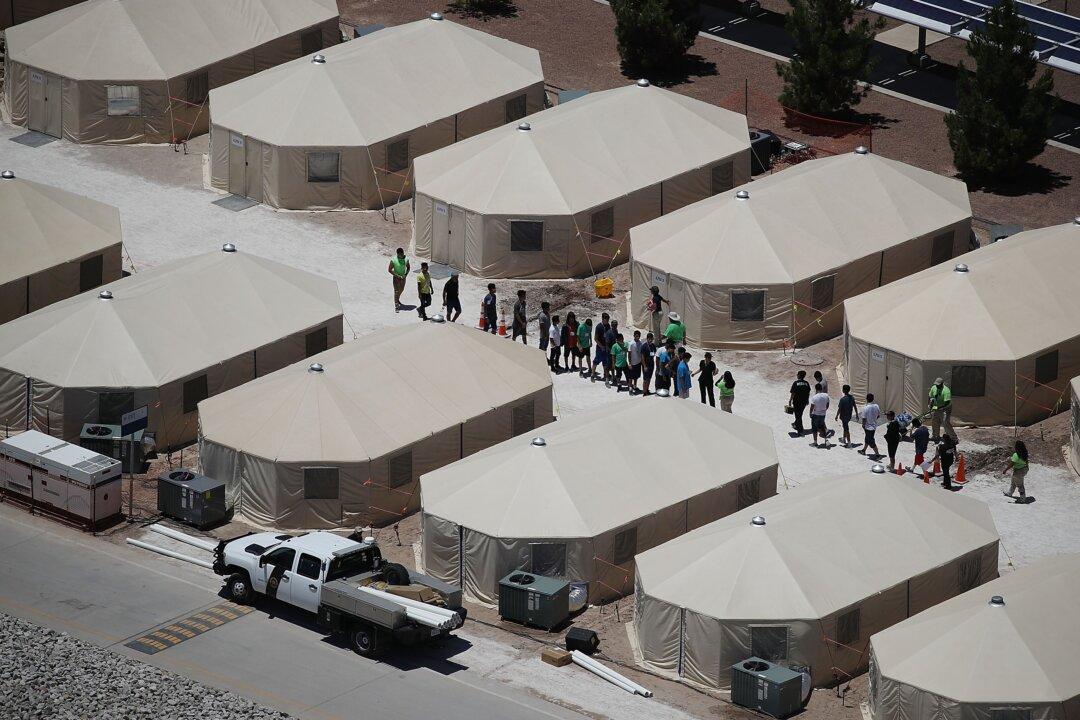President Donald Trump said he will have tent cities built at the southern border in order to stop the entry of migrant caravans traveling toward the United States from Central America.
Trump previously warned the migrants to turn around, saying the United States won’t accept their illegal border crossing. He’s even sent about 3,000 troops to help the Border Patrol stop illegal entrants and plans to send about 4,200 more.





